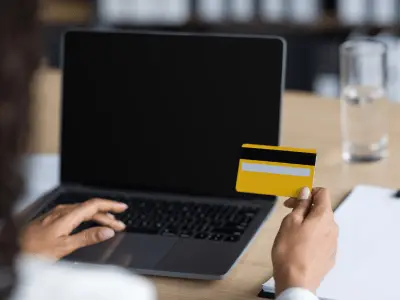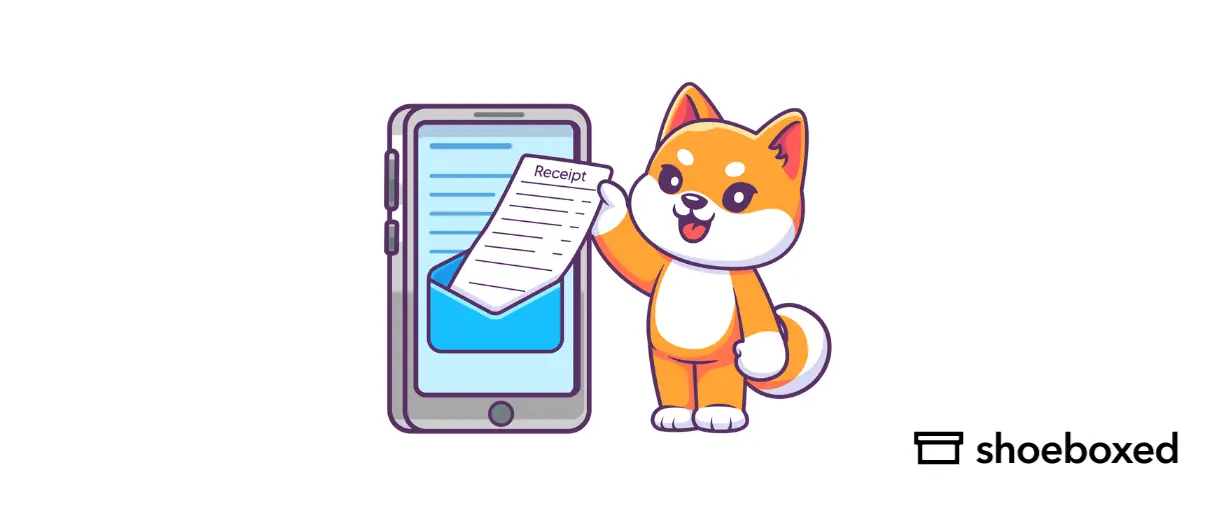As technology becomes more convenient, secure, and cost-effective, more people are preferring to go digital as much as possible in their daily lives—this includes their payments.
45% of Americans didn’t write a check in 2022, which means that almost half of the population is now opting for a more digital route to payments.
In this post, we’ll explore the pros and cons of paperless payments and share some tips to manage your paperless receipts and invoices!
What is paperless billing?
Paperless billing lets you view and pay your bills online. Paperless bills and payment reminders are usually emailed to customers and accessible via their online accounts.
The pros and cons of paperless payments
The pros
1. Improved efficiency and convenience
Since paperless payments can be processed online and automatically, it helps customers and businesses save time and reduce errors compared to manual data entry and processing. So you can manage your finances through these online accounts.
Additionally, paperless payments can be processed anywhere. A service that allows you to do that and more is Shoeboxed’s MailMate, a virtual mailbox service that lets you receive your mail anywhere at any time in the world.
With MailMate, your physical mail (from paper bills, legal documents, etc.) will be forwarded to a secure scanning location to be digitized and uploaded for your account to view.
These digital documents will be saved and stored. From there, you can pay bills, share information with your team, and easily search for past emails, including payments.
MailMate offers flexible payment options so that you can find a perfect plan for your situation.
2. Save money
Another one of the benefits of paperless payments is you eliminate the need for paper checks, envelopes, stamps, and other associated expenses.
In general, the further the destination, the more postage you would have to pay. Additionally, issuing and receiving a paper check can cost between $2-$4. So, saving money is easier when you don’t have to spend on paper checks and other associated costs.
3. Enhanced security and fraud prevention
Digital payment methods are often more secure as they incorporate encryption and other security measures to protect sensitive information such as card numbers, PINs, account numbers, social security numbers, etc.
Many companies have streamlined their online payable processes by implementing a secure software system, resulting in faster and more accurate vendor payments.
Additionally, more than one million checks are forged daily in the US. While you may not intentionally be forging checks, a forged check may be given to you. Processing a forged check can result in bounced check fees, lowering your credit score, delayed payments, and potentially, felony and imprisonment.
So by going the paperless billing route, you can reduce fraud troubles.
The cons
1. Resistance to change
While more than half of Americans use their phones to make payments, less than half are not using that option. Checks and cash-based method
Some people prefer paper payments, such as cash and checks, because they can physically hold and see their money whenever they purchase.
Additionally, many countries have different payment methods, such as cash being the preferred payment or checks.
2. Technical challenges
While paperless payments can enhance security and reduce the risk of expense fraud, they can also be vulnerable to cyberattacks, data breaches, and identity theft.
3. Regulatory issues
Generally, it is common to have two to three digital payment providers in the US, such as Paypal, Venmo, and Zelle.
However, each country has laws and regulations regarding payments, including international or cross-platform payments. These issues can lead to delayed payment processing or transaction denial.
Why is paperless billing important?
It started in the late 1990s when the “electronic bill presentment and payment” method was a way for businesses to save money. While it was a thing before covid, it gained momentum during the pandemic when more people started to rely on digital communication and services.
Paperless billing is extremely useful for business customers when everything is in digital format, making it more searchable and savable. While the benefits are great, it’s important to look at the environmental impact (or the reduced amount) by going a paperless route.
The paperless route results in less paper waste and ink being used for printing, which helps conserve natural resources and reduces waste. Additionally, with electronic bills, it will be easier to track and keep records.
5 Tips for managing paperless payment receipts and invoices
If you are new or have been wanting to try the paperless route, here are some tips:
create folders and tags for easy scanning
set up automatic payments from your bank
monitor and check for any suspicious activities
create a separate email or account to differentiate between personal mail and business mail
Back up any important files, digitize receipts and invoices so that you will always have a digital copy
What is autopay?

Autopay lets customers pay their bills automatically each month.
Autopay is a feature commonly used in paperless billing and by various service providers, from credit card companies to streaming services and anything in between.
Autopay allows customers to set up automatic payments for their bills. The money is automatically deducted from the customer’s bank account or card so they never miss a payment.
In short, autopay is a way to set and forget your bills.
How does autopay work?
Autopay works by giving businesses permission to pay on accounts payable using the customer’s card or bank information.
When a bill is due, the money is automatically transferred from the customer’s card or bank so that the recurring bill is paid on time.
Is autopay a good option? Pros and cons
The pros
You won’t miss a payment when your paperless billing is automated.
Autopay is time-saving for businesses and those with lots of bills. When money is automatically deducted from your bank account, you can streamline your billing process and focus on other things.
Your credit score will improve when you pay bills with autopay. Missed payments are one of the worst things for your credit, and with automatic payments paying your bills on time, your credit score could drastically improve.
The cons
You’ll have to ensure you have enough funds in the account to cover the bills with automatic payments each month.
Autopay bills are easy to forget and you could end up paying for a service longer than you intended.
You could miss problems with your bills. Double-billing and suspicious charging could slip through if you don’t habitually monitor your bank account and review statements.
Overall, autopay can be a good option for recurring paperless billing or bills with static payments (payments that don’t change each month).
Learn more about how autopay could help you manage your money in the video below:
Dave Ramsey explains how autopay (can) hurt your budget | The Ramsey Show – Highlights
Break free from paper clutter ✨
Use Shoeboxed’s Magic Envelope to ship off your receipts and get them back as scanned data in a private, secure cloud-based account. 📁 Try free for 30 days!
Get Started TodayFrequently asked questions
Is paperless billing a good idea?
Paperless billing can make tracking your expenses, reconciling your accounts, and making payments easier and more automated. E-statements also better protect sensitive information with encryption technology and reduce the paper clutter in your home office.
What is the difference between AutoPay and paperless billing?
AutoPay is an option that many businesses and services use to automatically deduct bill payments from customers’ bank accounts or credit cards each billing period. On the other hand, paperless billing lets customers manage and pay their bills online without being mailed paper statements.
In closing
Using a paperless payment route is a great way to save time, money, and resources. With the help of virtual mailboxes like MailMate, paperless payment providers, and online payment options, a paperless payment life is easy.
Tammy Dang is a staff writer for Shoeboxed covering productivity, organization, and digitization how-to guides for the home and office. Her favorite organization tip is “1-in-1-out.” And her favorite app for managing articles and deadlines is Monday.com.
About Shoeboxed!
Shoeboxed is a receipt scanning service with receipt management software that supports multiple methods for receipt capture: send, scan, upload, forward, and more!
You can stuff your receipts into one of our Magic Envelopes (prepaid postage within the US). Use our receipt tracker + receipt scanner app (iPhone, iPad and Android) to snap a picture while on the go. Auto-import receipts from Gmail. Or forward a receipt to your designated Shoeboxed email address.
Turn your receipts into data and deductibles with our expense reports that include IRS-accepted receipt images.
Join over 1 million businesses scanning & organizing receipts, creating expense reports and more—with Shoeboxed.
Try Shoeboxed today!



